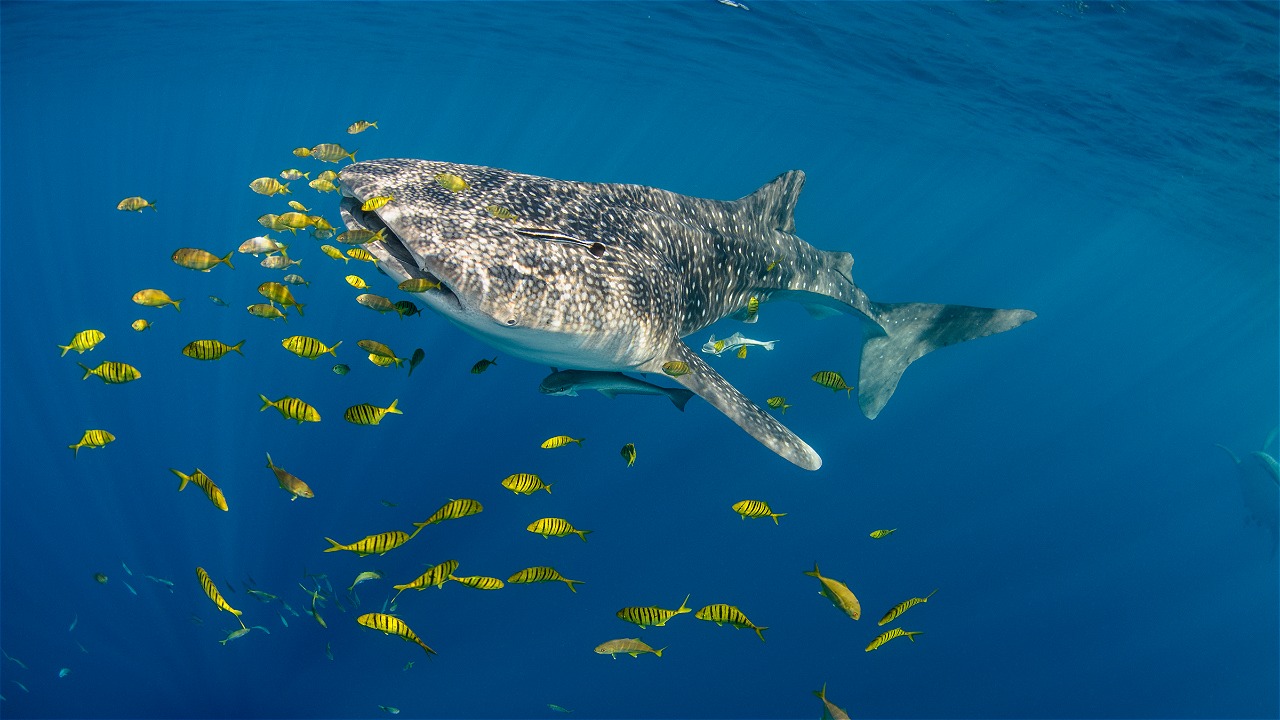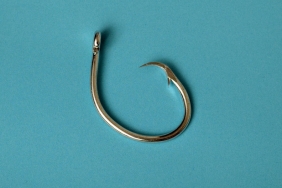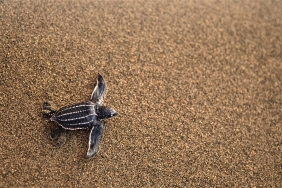10 "NEW INDIVIDUALS" OF WHALE SHARK IDENTIFIED IN TALISAYAN WATERS
By: Dwi Suprapti
Berau - The whale shark (Rhincodon typus) has been recognized in Kalimantan since it appeared in the media in late 2013. There is still a lot of information to be extracted from this fish that has been fully protected based on KEPMEN KP No. 18 of 2013 concerning the Determination of Full Protection Status of Whale Shark, due to the lack of data and information, including official data from the Directorate of Conservation of Fish Areas and Species (KKJI) KKP. Therefore, BPSPL Pontianak together with DKP Berau, Mulawarman University and WWF-Indonesia, conducted a joint survey to identify whale sharks in Talisayan.
The survey, which took place on September 16-19, 2014, successfully identified 10 whale sharks with a composition of 9 males and 1 female measuring from 2 to 7 meters.
According to Casandra Tania, Marine Species Officer WWF-Indonesia, the size of the whale shark encountered is classified as juvenile or immature. Casandra also explained that the trend of whale sharks with the majority of immature males was also found in the Cenderawasih Bay National Park, West Papua; Papua and Ningaloo Reef, Australia. The international research community still does not know the exact whereabouts of female, juvenile, and adult whale shark individuals.
Head of DKP Berau, Fuadi, through the Head of Coastal and Small Island Conservation and Development Section, Yunda Zuliarsih, said that whale sharks around nets in Talisayan Waters provide opportunities for the development of tourism activities. However, before utilization (tourism) activities begin, surveys to gather preliminary information need to be carried out so that tourism activities do not develop wildly.
Similarly, Abdul Rahman, SH, Talisayan sub-district head, said that the data and information collected will be useful to better understand the presence of whale sharks in Talisayan and support more responsible and sustainable tourism development. The whale shark, known by the Talisayan community as the spotted shark or Labetti (spotted fish) will become an attraction and icon of marine tourism for Talisayan District.
The survey that has been conducted is the initial stage of the Whale Shark study in Talisayan. "BPSPL Pontianak plans to conduct a follow-up survey next year to deepen the existing information by involving many parties such as from scientific authorities (LIPI), universities and NGOs in its implementation," said A.Muh. Ishak Yusma, the person in charge of survey activities and Head of Balikpapan Unit, BPSPL Pontianak.
Meanwhile, according to one of the survey team from Mulawarman University, Adnan, M.Si, information on the existence of whale sharks in Indonesia has not been stored through a national database. Foreign researchers who take data in Indonesian waters do not all submit to KKP or LIPI as an institution that has authority in management and science. Adnan added that Indonesia lacks researchers for endangered or protected species, especially whale sharks, although Indonesian universities have produced many researchers from both students and lecturers. Through this survey, it is hoped that it can stimulate researchers to conduct studies and research related to whale sharks in Indonesia.
The whale shark is the largest fish in the world. This species is thought to grow up to 18-20 m, but it is very rare to find specimens above 12 m with a weight of 20 tons. Despite their large size, whale sharks tend to be docile and harmless to humans.
This shark has 2 mm thick skin that is gray and dotted with white spots. According to scientists, the pattern of the spots is considered unique to each individual and can be used as a basis for individual whale shark identification. Warm tropical and subtropical waters (18-30°C) except in the Mediterranean Sea are where whale sharks can be found. These fish are migratory animals. It is suspected that individuals of whale sharks encountered in Ningaloo Reef, Australia migrated to the Philippines through Indonesia.
In Indonesia, whale sharks are found in the waters of Sabang, West Kalimantan, Berau, Situbondo, Probolinggo, Bali, Nusa Tenggara, Alor, Flores, North Sulawesi, Maluku and Papua. In the Probolinggo area, East Java, its presence is seasonal, January-March, while in Kwatisore, Cenderawasih Bay, West Papua, whale sharks are present throughout the year. Trends in other locations, especially in Talisayan, still need further research.
For more information, please contact:
- Casandra Tania, Marine Species Officer WWF Indonesia (ctania@wwf.or.id; +62811 8898075+62811 8898075)
- A.Muh. Ishak Yusma, Head of Balikpapan Working Unit, BPSPL Pontianak (a_issaky@ymail.com; bpsplsatkerkaltim@yahoo.com, +62 8124233 979+62 8124233 979 )
Call
Send SMS
Add to Skype
You'll need Skype CreditFree via Skype





